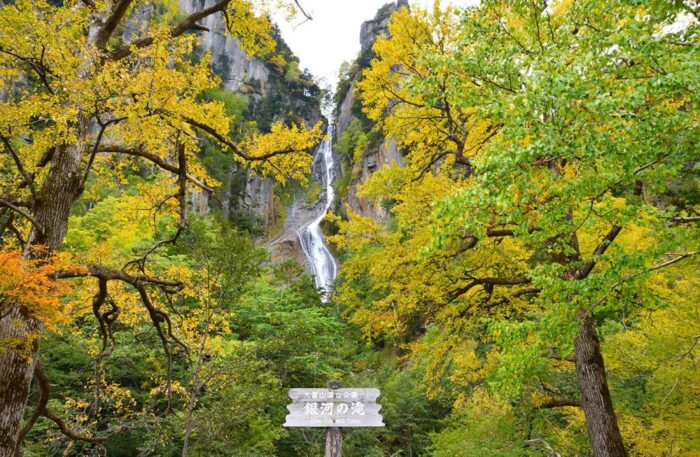Asahikawa is the second-largest city in Hokkaido, with only Sapporo being larger. It is a relatively young city, having only been established in the early 20th century. There are many reasons to go here such as the zoo that is famous for its penguins, the beautiful Sounkyo area, and the winter festival.

Asahikawa Overview
There are many rivers and bridges in Ashikawa, and its climate is continental with relatively warm but short summers and long, cold winters. The lowest temperature that has ever been measured in Japan, has actually been measured in Ashikawa. It was in January 1902, and it became -41 degrees Celcius.
Early February each year the Ashikawa Winter Festival is held, which is the second biggest festival after the Sapporo Snow Festival. During this festival, you can see amazing snow sculptures and fireworks, and there are several snow-based activities organized such as snow sliding, sleigh riding, and snowmobile riding.
Ashikawa’s gastronomical claim to fame is its Ashikawa Ramen, a noodle dish featuring thin and al-dente noodles, kelp, pork, and chicken meat and anchovies. What makes this style of ramen stand apart from Japan’s other ramen varieties is the layer of lard on top of the soup, which helps the dish retain its heat for longer.
Asahiyama Zoo
The Asahiyama Zoo is a must-see if you go to Asahikawa, it is one of the most popular zoos in Japan mainly because of its unique facilities. After the number of visitors declined in the 1990s, the new director decided to build some unique, interactive animal viewing facilities which have greatly contributed to the zoo’s current popularity.
You can see animals like seals, wolves, and leopards from up close because of the way the cages are designed, and the most popular attraction is the penguins. Not only can you see them swim above you in the see-through walking tunnels, but the zoo also organizes penguin walks in the winter which are very interesting to observe.
Hokkaido Ice Pavillion
Hokkaido is known for its fresh seafood, tasty dairy, wild nature, and for its ice-cold winters. It is not surprising that the coldest temperature ever measured in Japan, -41 degrees Celcius, was measured in Hokkaido in 1902. Thankfully the mercury doesn’t usually go down to that point, but if you would still like to experience what minus 41 degrees Celcius feels like, Hokkaido Ice Pavillion is the place to go.
Located between Ashikawa and the Sounkyo area, Hokkaido Ice Pavillion has two icy cold rooms. One where the temperature goes down to minus 20 degrees Celcius, and one where the temperature reaches minus 41 degrees Celcius. You will first walk through a sort of maze with mirrors and light all around you before you reach the -20 room. In here, the wet towel you get before you go in will stand up straight.
If you then dare to continue on to the -14 room, you will be able to blow soap bubbles and catch them again without them breaking because of the low temperature. You will also see ‘diamond dust’ in the air, tiny ice crystals that form from moisture in the air on extremely cold days in Hokkaido. If you are a real tough guy (m/f), you can strip down and have your picture taken for the wall of fame. But this is obviously very optional.
Asahidake
Mount Asahidake is the highest mountain in Hokkaido at 2290 meters, and it is a part of Daisetsuzan National Park. It is a hikers’ paradise with trails for beginners and advanced hikers. A good place to stay during your exploration of the area is Asahidake Onsen, which is a small hot spring resort with only a few lodges and hotels.
The ropeway station in the hamlet will take you up to the point from where it is a 2-hour strenuous hike to the summit of the mountain. Beginners can stick to the courses around the ropeway station. And advanced hikers can take a 1-2 day tour that takes them to Sounkyu Onsen.
Sounkyo

The name Sounkyo comes from the Ainu language, and it means ‘the river with many waterfalls’. It is an appropriate name as the area is especially known for its many impressive waterfalls and cliffs. In the middle of the area is Sounkyu Onsen, a small resort village with comfortable hotels.
Noteworthy spots in Sounkyo include the Obako and Kobako rock formations and the Ryusei-no-taki and Ginga-no-taki waterfalls. The Ginga-no-taki or Milkyway-falls is the female waterfall that looks milky-white because it runs like layers of fine, white thread. And the Ryusei-no-taki or Shooting Star-falls is the male waterfall that runs like one thick thread. The best time to travel here is in September when the entire area erupts in beautiful fall foliage. But it is also worth a visit for the rest of the year. The summer brings the fire festival, while in the winter the ice water festival is held.
A great way to enjoy the gorgeous views in the area is from the mile-long Kurodake Ropeway and the Kurodake mountain itself. After taking the ropeway from the Sounkyo hot spring area, it will bring you to the 5th station on Mt. Kurodake. From there, you can either take a chair lift to the 7th station at a height of 1520 meters or walk there. And from the 7th station, it is another 1.5-hour hike for hikers in a good condition to reach Mt. Kurodake’s summit at 1984 meters.
Your Japan Tour
As seasoned Japan experts, we create perfect Japan package tours including destinations like Hokkaido. Check out our group tours and private tours, or contact us to start planning your unforgettable holiday to this fascinating country. Japan is full of once-in-a-lifetime experiences, culture, history, nature, and delicious food!

